
| Fall 2000 |
The Beauty of Leeches
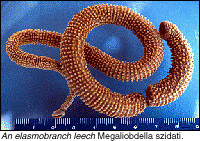
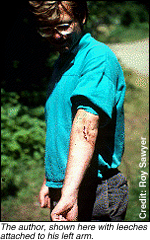 Much
maligned, leeches get one of the bad raps of the animal world. Even wolves
seem to have their redeeming features; their care for their young, their
graceful pursuit of quarry. But what could inspire someone to devote a career
to leeches?
Much
maligned, leeches get one of the bad raps of the animal world. Even wolves
seem to have their redeeming features; their care for their young, their
graceful pursuit of quarry. But what could inspire someone to devote a career
to leeches?
Leeches are more than mere worms intent on extracting lifeblood from an unsuspecting swimmer. They have fascinated me since I was first attacked by one as a boy and my mother saved me from its advances by salting it off of my leg. My interest in leeches was piqued as an undergraduate student at the University of Toronto where I spent a summer elucidating the life cycle of a blood parasite of frogs. This parasite, it turns out, used leeches in the same manner that malaria uses mosquitoes, to transmit itself from host to host. Over time I came to appreciate the role that leeches play as vectors of blood parasites of aquatic animals, but more than this, I came to appreciate their aesthetics and their diversity.
In point of fact leeches are remarkably beautiful. The North American medicinal leech, if anyone bothered to look before tearing one away, is decorated with orange and black polka dots on an olive canvas; the European leech of bloodletting lore has intricate ruby and emerald patterns running the course of its body, and all are among the most graceful of swimmers, plying their watery environment with sinusoidal waves of motion as they stealthily track their targets. One whole family of leeches, specializing in turtles and frogs, exhibits as much or more parental care as any bird; not only brooding over their young while they hatch, but carrying their offspring to their first bloodmeal, ensuring a head-start on life.
Once
again leeches are playing an important biomedical role, one less dubious
than that of old, which saw them used for everything from headaches to
obesity. They are the tool of choice in relieving post-operative hematoma
in microsurgical procedures, directly responsible for the successful reattachment
of many a finger, ear, and toe. The pharmaceutical properties of their
powerful anticoagulants are being explored and exploited at the biomolecular
level. But in this context, only 3 or 4 of the perhaps 1,000 known species
are being studied.
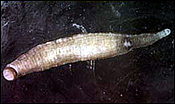 |
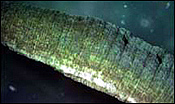 |
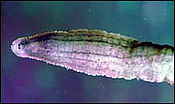 |
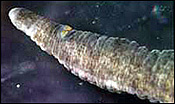 |
In a short, six-week expedition into the far reaches of the Bolivian Andes last year, I found more than six species of leech new to science. Since then intensive genomic evaluation of these species has caused a wholesale re-evaluation of the history of leech evolution and patterns of life-history diversification. |
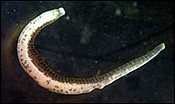 |
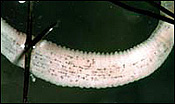 Leeches from Tojoloque |
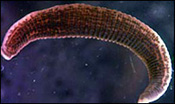 |
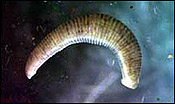 |
Much of the biomedical research is focused on those species that are normally encountered by humans in North America and Europe. Beyond this there are species living on land and in the oceans, species feeding on sharks or birds, and even an enormous variety of leeches that have given up feeding on blood altogether. Phylogenetic work accomplished by me and my students on the evolutionary history of leeches has demonstrated that those species currently under intensive pharmaceutical analysis for their salivary compounds are not each others' closest relatives and that even the non-blood-feeders are descended from sanguivorous ancestors. The prospects for revealing a more diverse pharmacopoeia are enormous and are hampered only by a lack of understanding of their biodiversity and evolutionary relationships.
From our work it has now become apparent that two of the four major lineages of leeches saw their origins in South America. Blood-feeders and non-blood-feeders alike are more diverse in South America than almost anywhere in the world. But the specifics of when and where this radiation occurred remains elusive, and much of the answer to leech origins remains locked away in the remotest places of the Amazon and the Andes-areas where previously there had been only a single scientific study.
— Mark E. Siddall
| Also in this edition >>> |
Turtles in Trouble >>
The Conservation Education Network >> Viet Nam: Filling in the Gaps >> Of Gastropods and Bivalves >> Interpreting Biodiversity in Viet Nam >> The Beauty of Leeches >> Leech Prospecting in the Bolivian Andes >> |
|
Communicate
|
Contact the editor |
Contact the CBC |
| << Previous | Next Article >> |
|
Resources
|
|
Email: siddall@amnh.org |
Newsletter Home & Archives |
© 2000 American Museum of Natural History